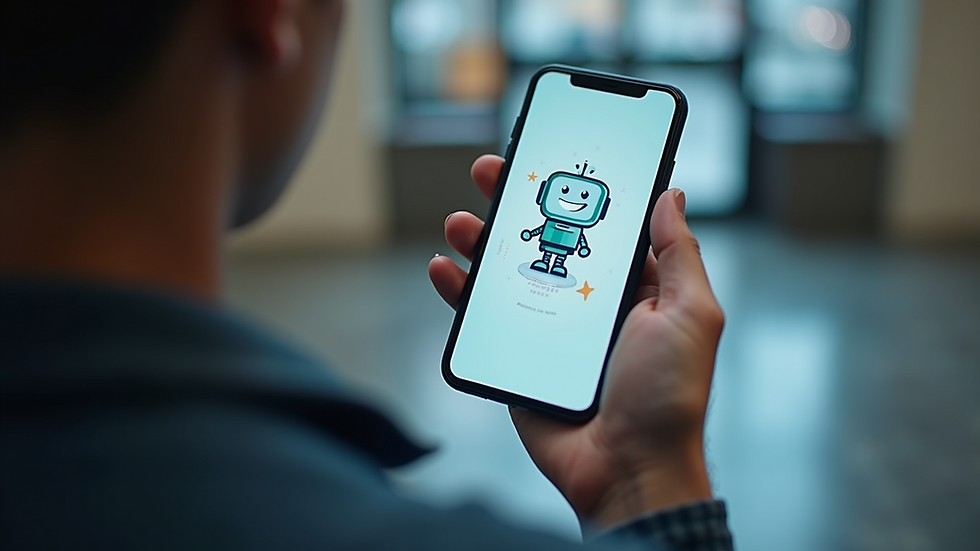Boost Conversions with AI Chatbot Recommendations: Insider Tips
- Bornil Banerjee
- Jul 26
- 4 min read
In today's fast-paced digital world, businesses are constantly looking for ways to improve customer engagement and boost conversions. One of the most effective tools at your disposal is an AI chatbot. These intelligent systems can provide personalized recommendations, answer questions, and guide users through their buying journey. In this post, we will explore how to leverage AI chatbot recommendations to enhance your conversion rates.
Understanding AI Chatbots
AI chatbots are software applications that use artificial intelligence to simulate human conversation. They can interact with users through text or voice, providing instant responses to inquiries.
These chatbots can be programmed to understand customer preferences, analyze data, and offer tailored recommendations. This capability makes them invaluable for businesses looking to enhance customer experience and drive sales.
The Importance of Personalization
Personalization is key to successful marketing. Customers today expect tailored experiences that cater to their individual needs.
AI chatbots excel in this area. By analyzing user data, they can provide personalized product recommendations based on previous interactions, preferences, and behaviors.
For example, if a customer frequently browses athletic shoes, the chatbot can suggest the latest models or related accessories. This level of personalization can significantly increase the likelihood of conversion.
Implementing AI Chatbot Recommendations
To effectively implement AI chatbot recommendations, follow these steps:
1. Define Your Goals
Before deploying a chatbot, clearly define your goals. Are you looking to increase sales, improve customer service, or gather feedback?
Having specific objectives will guide your chatbot's design and functionality.
2. Choose the Right Platform
Select a chatbot platform that aligns with your business needs. There are many options available, from simple rule-based bots to advanced AI-driven systems.
Consider factors such as ease of use, integration capabilities, and scalability when making your choice.
3. Train Your Chatbot
Training your chatbot is crucial for its success. Provide it with a comprehensive database of product information, FAQs, and customer interactions.
The more data it has, the better it can understand and respond to user inquiries.
4. Create Engaging Conversations
Design your chatbot to engage users in meaningful conversations. Use a friendly tone and encourage users to ask questions.
For instance, instead of simply stating product features, the chatbot can ask users about their preferences and suggest products accordingly.
5. Monitor and Optimize
Once your chatbot is live, continuously monitor its performance. Analyze user interactions to identify areas for improvement.
If certain recommendations are not converting, adjust the chatbot's responses or update its training data.
Best Practices for AI Chatbot Recommendations
To maximize the effectiveness of your AI chatbot recommendations, consider these best practices:
1. Use Clear Language
Ensure that your chatbot communicates in simple, clear language. Avoid jargon and complex terms that may confuse users.
The goal is to make the conversation as smooth and intuitive as possible.
2. Offer Multiple Options
When making recommendations, provide users with multiple options. This allows them to choose what best fits their needs.
For example, if a user is looking for a laptop, the chatbot can suggest several models based on their budget and preferences.
3. Incorporate User Feedback
Encourage users to provide feedback on their chatbot experience. This can help you identify areas for improvement and refine your recommendations.
Consider implementing a quick survey at the end of the conversation to gather insights.
4. Leverage Data Analytics
Utilize data analytics to track user behavior and preferences. This information can help you fine-tune your chatbot's recommendations over time.
By understanding what users are looking for, you can enhance the relevance of your suggestions.
5. Test and Iterate
Regularly test your chatbot's performance and iterate on its design. A/B testing can help you determine which recommendations lead to higher conversion rates.
Make adjustments based on user interactions and feedback to continuously improve the experience.
Real-World Examples
To illustrate the power of AI chatbot recommendations, let's look at a few real-world examples:
Example 1: E-commerce Store
An online clothing retailer implemented an AI chatbot to assist customers in finding the right outfits.
The chatbot asked users about their style preferences and occasions, then recommended specific items. As a result, the retailer saw a 30% increase in conversion rates within three months.
Example 2: Travel Agency
A travel agency used a chatbot to help users plan their vacations.
By asking questions about travel preferences, the chatbot suggested tailored packages and destinations. This personalized approach led to a 25% increase in bookings.
Example 3: Food Delivery Service
A food delivery service integrated a chatbot to streamline the ordering process.
The chatbot learned users' favorite dishes and suggested meals based on their previous orders. This led to a 40% increase in repeat orders, showcasing the effectiveness of personalized recommendations.
The Future of AI Chatbots
As technology continues to evolve, so will AI chatbots. Future advancements may include more sophisticated natural language processing and machine learning capabilities.
This will enable chatbots to understand context better and provide even more personalized recommendations.
Businesses that embrace these advancements will likely see significant improvements in customer engagement and conversion rates.
Final Thoughts
Incorporating AI chatbot recommendations into your business strategy can be a game-changer. By personalizing the customer experience, you can boost conversions and foster loyalty.
Remember to define your goals, choose the right platform, and continuously optimize your chatbot.
With the right approach, your AI chatbot can become a powerful tool for driving sales and enhancing customer satisfaction.



Comentarios